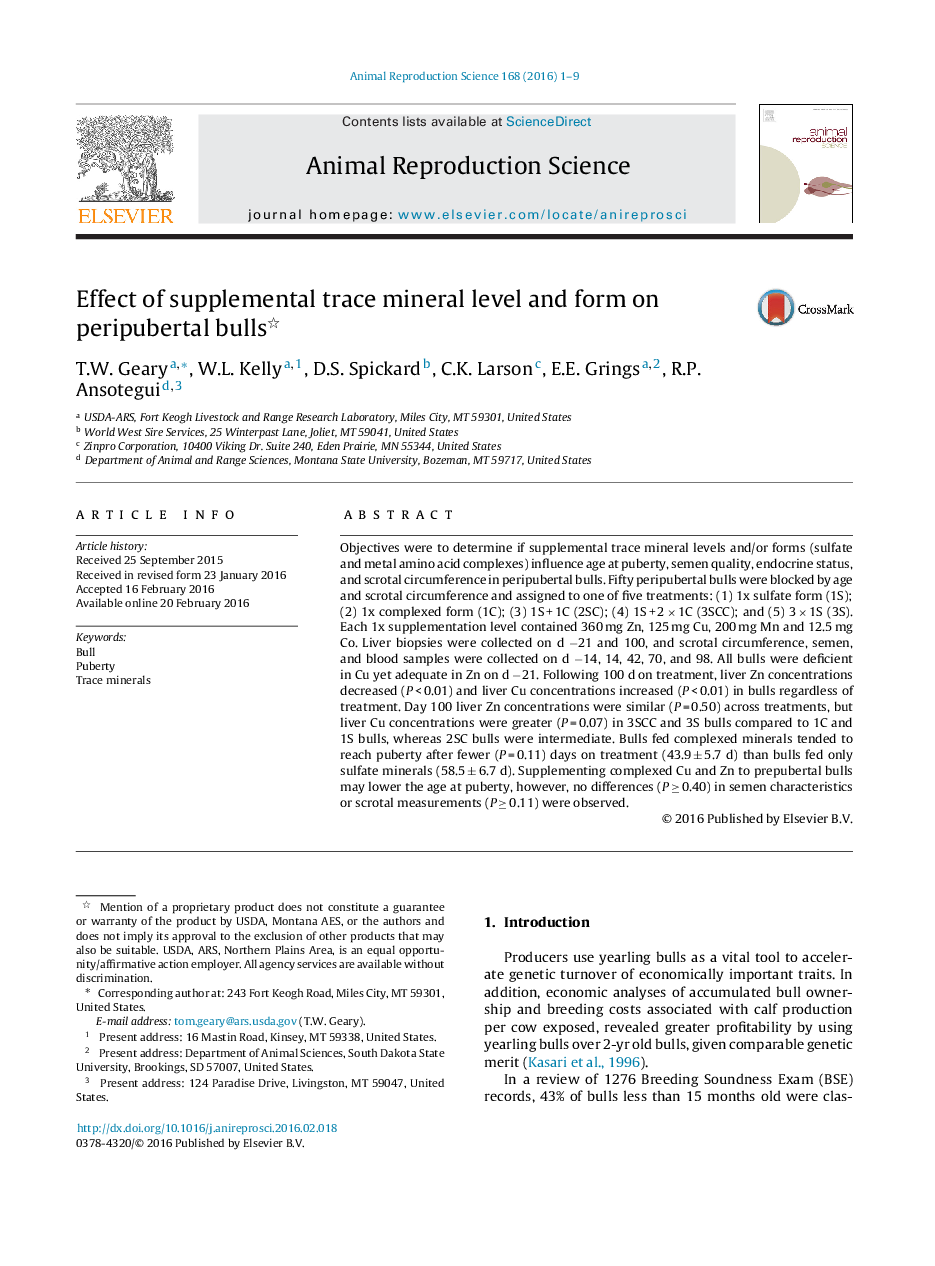| Article ID | Journal | Published Year | Pages | File Type |
|---|---|---|---|---|
| 2072513 | Animal Reproduction Science | 2016 | 9 Pages |
Abstract
Objectives were to determine if supplemental trace mineral levels and/or forms (sulfate and metal amino acid complexes) influence age at puberty, semen quality, endocrine status, and scrotal circumference in peripubertal bulls. Fifty peripubertal bulls were blocked by age and scrotal circumference and assigned to one of five treatments: (1) 1x sulfate form (1S); (2) 1x complexed form (1C); (3) 1S + 1C (2SC); (4) 1S + 2 Ã 1C (3SCC); and (5) 3 Ã 1S (3S). Each 1x supplementation level contained 360 mg Zn, 125 mg Cu, 200 mg Mn and 12.5 mg Co. Liver biopsies were collected on d â21 and 100, and scrotal circumference, semen, and blood samples were collected on d â14, 14, 42, 70, and 98. All bulls were deficient in Cu yet adequate in Zn on d â21. Following 100 d on treatment, liver Zn concentrations decreased (P < 0.01) and liver Cu concentrations increased (P < 0.01) in bulls regardless of treatment. Day 100 liver Zn concentrations were similar (P = 0.50) across treatments, but liver Cu concentrations were greater (P = 0.07) in 3SCC and 3S bulls compared to 1C and 1S bulls, whereas 2SC bulls were intermediate. Bulls fed complexed minerals tended to reach puberty after fewer (P = 0.11) days on treatment (43.9 ± 5.7 d) than bulls fed only sulfate minerals (58.5 ± 6.7 d). Supplementing complexed Cu and Zn to prepubertal bulls may lower the age at puberty, however, no differences (P â¥Â 0.40) in semen characteristics or scrotal measurements (P â¥Â 0.11) were observed.
Keywords
Related Topics
Life Sciences
Agricultural and Biological Sciences
Animal Science and Zoology
Authors
T.W. Geary, W.L. Kelly, D.S. Spickard, C.K. Larson, E.E. Grings, R.P. Ansotegui,
